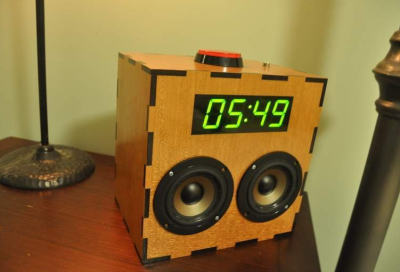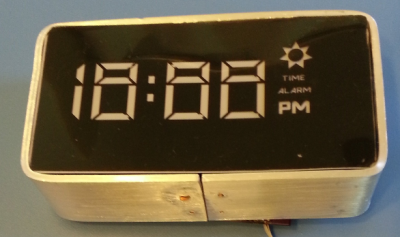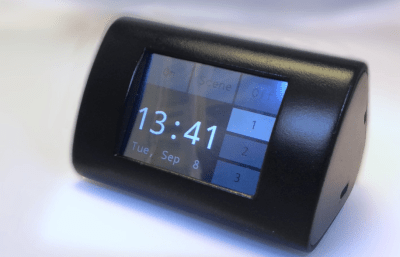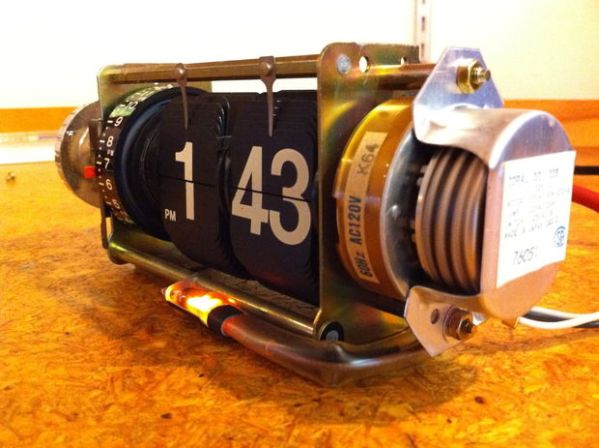Be careful what you say when you are shown a commercial product that you think you could make yourself, you might find yourself having to make good on your promise.
When he was shown a crowdfunded alarm clock coffee maker, [Fabien-Chouteau] said “just give me an espresso machine and I can do the same”. A Nespresso capsule coffee machine duly appeared on his bench, so it was time to make good on the promise.
The operation of a Nespresso machine is simple enough, there is a big lever on the front that opens the capsule slot and allows a spent capsule to drop into a hopper. Drop in a new capsule, pull the lever down to load it into the mechanism, then press one of the buttons to tell it to prime itself. After a minute you can them press either of the large cup or the small cup buttons, and your coffee will be delivered.
To automate this with an alarm clock there is no necessity to operate the lever, it’s safe to leave loading a capsule to the user. Therefore all the clock has to do is trigger the process by operating the buttons. A quick investigation with a multimeter on the button PCB found that the voltage present was 15 V, well above the logic level of the STM32F469 board slated for the clock. Thus a simple circuit was devised using a MOSFET to do the switching.
Finally, the clock software was created for the STM32F469. The chip’s 2D graphics acceleration hardware and the development board’s high quality display make for a very slick interface indeed.
You can see the resulting clock in the video below the break. It’s an alarm clock coffeemaker we’d be proud to have beside our beds, but there’s one slight worry. On a mains-powered device like the Nespresso the low voltage rails are not always mains-isolated, and it’s not clear whether or not this is the case. Maybe we’d have incorporated an opto-isolator, just in case.




 [Bokononestly] decided to
[Bokononestly] decided to 
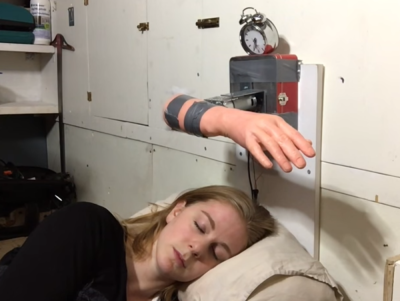 The system is triggered by an alarm clock. The clock’s alarm output is connected to an Arduino Uno. The Uno then activates a relay, which spins up the motor. [Simone] realizes that she could have skipped the Arduino here, but it was the path of least resistance in for this project. If the slapping hand isn’t enough to get you going, the Wake-up machine does have a secret weapon: It may just
The system is triggered by an alarm clock. The clock’s alarm output is connected to an Arduino Uno. The Uno then activates a relay, which spins up the motor. [Simone] realizes that she could have skipped the Arduino here, but it was the path of least resistance in for this project. If the slapping hand isn’t enough to get you going, the Wake-up machine does have a secret weapon: It may just 
